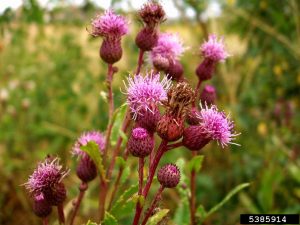Chapter 2: Why Are Weeds So Successful? Basic Ecology Concepts
Chapter Authors
Dr. Deana Namuth-Covert, Professor and Ms. Amy Kohmetscher, Instructional Designer
Ohio State – Agricultural Technical Institute
College of Food, Agricultural and Environmental Sciences
The Ohio State University

Oftentimes when taking a class or other professional development training on weeds, people like to go right to how to control them. The problem is that weed populations are very dynamic and constantly changing, so in order to more effectively minimize their effects on your crops over the long haul, it is important to understand some basic biological concepts. If you can see the world through the eyes of a weed, so to speak, then you can have more tools to outsmart them. In other words, sustained weed management goes beyond merely applying your favorite herbicide.
In this chapter, we will explore why scientific approaches are important in successful weed management in our field crop systems in particular. Then to start thinking about weed attributes, we will first consider life from a weed’s perspective and consider what would make an ideal weed. In this chapter, you will learn various ways that weeds can be classified. Finally, we will wrap up this chapter talking about how weeds actually interfere with our crops.